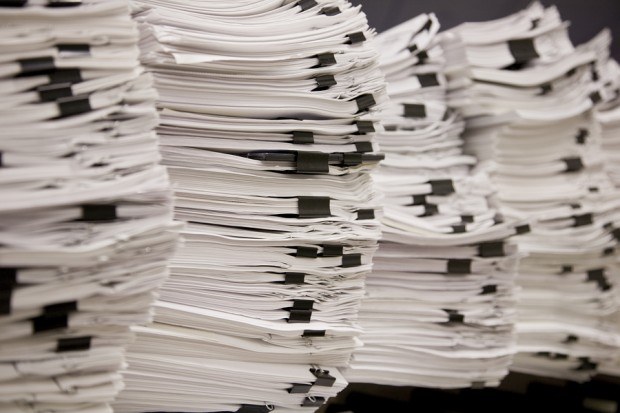Claims inflation for the commercial liability business will increase through 2020, although it was accelerating even before the coronavirus pandemic hit. This trend, known as social inflation, has led the insurance industry to reduce capacity and increase prices to try and re-establish profitability and prevent reserving deficiencies.
Insurance companies reported more than $20 billion of pandemic-related booked claims in the first half of 2020. The vast majority of these claims have affected the property business as losses covered by event-cancellation and business-interruption policies have been quick to materialise. Specialty lines, such as travel or credit and surety, have been affected to a lesser extent, although credit and surety losses will increase in H2 2020 alongside the increasing number of bankruptcies.
The impact of the pandemic on liability lines of business for commercial clients will unfold more slowly than for other lines, but it will be severe nonetheless. This will exercise additional pressure on both claims inflation and insurance and reinsurance pricing, reinforcing the trend already seen before the onset of the pandemic.
The effect of social inflation is most pronounced in such countries as Australia, the UK and the U.S., where litigation activity has increased again over the past three to four years, although other regions, such as continental Europe, are also affected.
The earnings of insurers and reinsurers with a large commercial liability book are under the most pressure and these companies will raise prices to keep up with increasing claims inflation. (See article covering Fitch’s commentary on the reinsurance marketplace).
The social and economic response to combat the pandemic has also led to areas where claims activity has diminished over the last several months. Court closures have slowed resolution of cases, which contributes to a near-term pause in large verdict volume. Claimants with recession-related cash flow pressures may be more inclined to readily settle matters than prolong legal actions.
Changes in economic activity are affecting claims frequency in several areas, ranging from fewer accidents in businesses with fewer people on the premises, to fewer adverse outcomes in non-pandemic essential medical specialties, which saw large reductions in patient interactions or procedures performed recently. This effect will be temporary in nature, though, as the number of legal proceedings will increase again alongside general economic activity.
Social inflation has been caused by higher frequency of litigation, a broader definition of what constitutes a liability and juries that enact more plaintiff-friendly legal decisions. Countries such as the U.S. or the UK, which operate a common law legal system, are more affected by social inflation than those that operate a civil law system.
Social inflation has affected medical malpractice, commercial auto and directors and officers liability (D&O) in particular. The comUSpensation awarded by juries often reflects public sentiment more than the actual damage. A high-profile litigation example in the U.S. is the so-called opioid crisis – drug companies have been accused of playing a harmful role in the extensive overuse of opioid medications, with the overuse blamed on both medical prescriptions and illegal sources.
Most Affected Liability Segments
Professional, D&O and cyber liability will be among the liability segments most affected by the pandemic. Litigation clusters may arise in sectors such as tourism, healthcare or meat packing. Hospitals and nursing homes, hotels, restaurants and cruise shipowners may have to answer to allegations that they have not protected their residents, patients, guests and employees effectively from coronavirus. Owners of meat-packing facilities that report high infection rates may also be held responsible. Claims frequency for medical malpractice is also likely to rise as physicians face lawsuits for neglecting standards of care.
Additionally, corporate boards may be sued by their shareholders or regulators for breaching their fiduciary duties, government agencies may be sued for mishandling the pandemic, and companies that went bankrupt because of the pandemic could be held liable by their creditors. IT systems for companies in the service sector, whose employees work from home, may be more vulnerable to cyber attacks, leading to a higher claims frequency in cyber liability.
Workers’ compensation has not been affected too severely by the pandemic as employees have either been sent home to work remotely or have not been at work at all. This has limited the number of claims from employees that have contracted COVID-19. It remains to be seen whether this will change as more employees return to their places of work.
The extent to which these claims will be covered by the insurance and reinsurance industry is highly uncertain. This depends on exclusions in the policies, whether originators of the claims can be identified or not, how many claims are grouped into one single occurrence, and the local laws. Insurance and reinsurance companies and their clients may need to turn to courts to decide who is liable and who is not.
The exact number of claims that the pandemic could cause in the liability business is also uncertain, but it is likely that liability claims will be substantial – although they will not reach the level of property claims for the industry. They will be spread over several years instead of several quarters as lengthy legal procedures delay the settlements. As-yet-unknown long-term health effects of COVID-19 may affect ultimate loss estimates for years to come. The global recession also will take its toll on premium volumes in commercial liability as less economic activity may affect some lines of business, such as workers’ compensation.
The soft commercial liability market reached a trough in 2018 following several years of falling prices due to fierce competition. The insurance industry had underpriced the inherent risks for several years, leading to substantial reserve deficiencies, which was in turn due to commercial liability being long-term in nature.
Persistently low interest rates were also detrimental to the underlying profitability of this business line. These lower rates were not factored in to the reserve estimates of older underwriting years, which therefore need readjusting. Several major providers of commercial liability insurance and reinsurance coverage started to scale back their capacity in 2018, paving the way for rising prices.
Price increases have been accelerating since 2018, reaching 7% on a global basis in the second quarter of 2020, according to Marsh LLC. Price rises in recent quarters have been most pronounced in Australia, New Zealand and the UK. In these countries, as well as in the U.S., the financial and professional liability sector has had the highest price increases – in some isolated cases, prices have doubled. In Europe, prices have risen only since 2019 as social inflation has been less pronounced in this region. In Q2 2020, price increases have reached 5% in casualty and 22% in financial and professional liability in Europe.
The pandemic will reinforce this hardening market trend as substantial additional losses occur. On a global basis, price increases may reach double digits in commercial liability, driven mostly by D&O. Besides rate actions, underwriters will further tighten risk selection practices, and policy terms and conditions to include pandemic exclusions across a broad swath of coverages.
Nevertheless, profitability for the commercial liability business will remain poor over the next six to 12 months as the positive effects of price increases materialise slower than booked claims. The underlying underwriting result of the commercial liability business, which excludes pandemic-related claims, will improve significantly in 2020.
The insurance and reinsurance industry will try to change the terms and conditions of future policies to exclude pandemic-related coverage. This is in response to the coronavirus being systemic in nature and, therefore, not insurable in principle. A public-private partnership may be able to provide insurance coverage against pandemics without overburdening the insurance sector.
Pandemic-related commercial liability losses will be manageable as they will be spread over several years. While the industry’s financial performance including pandemic claims will suffer until most claims are provisioned for, the underlying financial performance, excluding pandemic losses, is improving and capital adequacy has remained strong enough to absorb those losses.
*This story ran previously in our sister publication Insurance Journal.





















 Why ‘Good Enough’ Is Killing Insurance: The Hidden Cost of Satisficing
Why ‘Good Enough’ Is Killing Insurance: The Hidden Cost of Satisficing  Artificial Intelligence Is Rewriting the Rules for Commercial Lines
Artificial Intelligence Is Rewriting the Rules for Commercial Lines  Good Times for U.S. P/C Insurers May Not Last; Auto Challenges Ahead
Good Times for U.S. P/C Insurers May Not Last; Auto Challenges Ahead  First Atlantic Hurricane Forecast for 2026 Suggests Season Close to 30-Year Norm
First Atlantic Hurricane Forecast for 2026 Suggests Season Close to 30-Year Norm 











